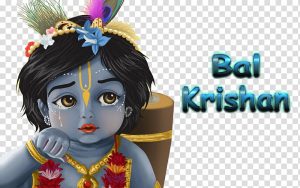In India, Krishna Janmashtami is also known as Krishnashtami, Srikrishna Jayanti, Gokulashtami, Ashtami Rohini, or Janmashtami. The yearly celebration denotes the birth anniversary of Lord Krishna and is praised on the Ashtami of Krishna Paksha of the dark fortnight in the long stretch of Shravan. In Sanskrit, ‘Ashtami’ signifies ‘eighth day’ and accordingly the name ‘Janmashtami’. The following day is praised as Dahi Handi. It celebrates Lord Krishna’s childhood who was attached to curd and butter, and how he would steal it. And this year, Janmashtami falls on 12 August and Dahi Handi will be celebrated on August 12.
The Story Behind Janmashtami
Krishna Janmashtami also celebrates ‘Nandotsav’. It is the day when Nanda Baba distributes gifts to the community in honor of the birth of Lord Krishna. As indicated by the mythological stories, the Kingdom of Mathura was under the rule of King Kansa. The King had a sister named Princess Devaki. He got his sister wedded to Vasudeva and out of nowhere the cloud thundered with a prediction that their eighth child would be the reason for his passing. The King tossed Devaki and Vasudev into jail and murdered all the six offspring of Devaki. The seventh youngster was covertly moved to the womb of Princess Rohini in Vrindavan who grew to become Balram.

In any case, after the introduction of their eighth child Krishna, Vasudev took the baby braving the storm, gave the child to them, and consequently took the baby girl with him. He told King Kansa that a girl child was born assuming he wouldn’t harm her as according to prophecy eighth ‘son’ would kill him. But Kansa threw the baby girl against a rock and suddenly the girl took the form of Goddess Durga and warned Kansa about his death. And years later, Krishna took the life of Kansa and Mathura was a happy kingdom.
Fasting
Those who keep fast during Janmashtami should not consume grains until Parana when the fast is broken on the following day after sunrise. For the Janmashtami fast, Parana is done the next day after sunrise when Ashtami Tithi and Rohini Nakshatra ends. Devotees should also take a Sankalpa which is a one-day long fast break on the following day. Devotees also sing devotional songs, chant ‘Vishnu Sahasranamam’, and enjoy a custom of setting Krishna’s object of worship in support.
Tithi
Ashtami tithi starts: 12:05 AM on August 12
Ashtami tithi closes: 12:48 PM on August 12

History of Dahi Handi
Lord Krishna experienced childhood in Vrindavan in the foster care of Nand and Yashodha and was a naughty kid. Baby Krishna loved makkhan (white butter), curd, and milk. He, along with his companions, would frequently steal butter from their neighbor’s homes. His mother Yashodha would regularly have to tie him up to stop his lovable antics. Lord Krishna is also referred to as Maakhan Chor or Navneet Chor due to these occasions.
The ladies living in Vrindavan had also begun storing freshly-stirred butter at a height to prevent a young Krishna from arriving at the pot of the delicious treat. The young Lord had his ways though. His companions and he would shape human pyramids to extract the butter from the pot hung at a rise. The Dahi Handi rituals consistently on Janmashtami are in this manner an impersonation of Lord Krishna’s efforts. The human pyramid is generally made of 9-levels by members called Govinda and comprises a young boy who is the last one to climb atop this pyramid and break the earthen mud pot suspended at a height of over 20 feet. Festivities occur on a large scale in prominent areas, while there are little scope ones too that happen in regions.

